Background: Porsche's losing Tiger
When the Tiger project was first announced in May 1941, Porsche did not take long to submit a very personal and original design, at first as a blueprint, then ordered as the prototype VK 45.01(P) and built at the Nibelungenwerk factory in Sankt Valentin, Austria. Porsche was placed in competition with Henschel after 21st May 1941, also asked to submit designs for a 45 ton heavy tank, later known as the famous Tiger. The VK 45.01(P) made its debut trials before being carried at the Kummersdorf testing grounds for the official trials headed by Hitler in April 1942. The Henschel prototype, the VK 45.01(H), fared way better than the Porsche vehicle, that suffered breakdowns. However, initially, the Porsche was given as the favorite. But the technical choices made, especially the two engines that powered the petrol-electric drive, which had accumulated too many teething problems, led to the cancellation of the Porsche project, in favor of the more conventional Henschel proposition. However, after an order from July 1941, 100 chassis had already been manufactured. There was no way they could be equipped with Krupp's Tiger turret, as these were reserved for the Henschel vehicles. Porsche was left then with these chassis, and proposed to convert them to SPGs, at first as heavy howitzer/mortar carrier.Ferdinand_Elefant_Aberdeen_ProvGrounds.jpg)
Conversion as a tank hunter
Eventually, on September 22nd of 1942, an official order came to convert the chassis into heavy tank hunters, armed with the latest version of the 88 mm (3.46 in) anti-tank gun, the L/71, also known as the StuK 43/1, still in development at that stage. It was a conversion inspired by the Hornisse, which was to use the same gun. The new vehicle was also meant to replace the older Marder II and IIIs in service on the Eastern Front. In comparison, the regular Tiger was equipped with the "short" version of the 88, the KwK 36 L/56. Performance was such that the maximal effective range in direct fire was estimated to be 4500 to 5000 m (2.8-3.1 mi). This was way beyond anything the Red Army possessed at the time.Development
Of the existing chassis, 91 (chassis number 150010 to 150100) were prepared to be completed as tank hunters, with the ordnance designation Sd.Kfz.184. The new design was ready on November 30, 1942, submitted to Hitler and approved. The trials of the first prototype began in March 19, 1943, when it was presented to Hitler at Ruegenwalde. The Fuhrer was impressed and requested that production be sped up. The conversion process eventually took place between March and May 1943, just in time for the summer campaign on the Eastern Front. It was designated Schwerer Panzerjäger Tiger(P). It was soon nicknamed Ferdinand, to honor "Ferdy" Porsche, the CEO, founder and historical figurehead of the Porsche company.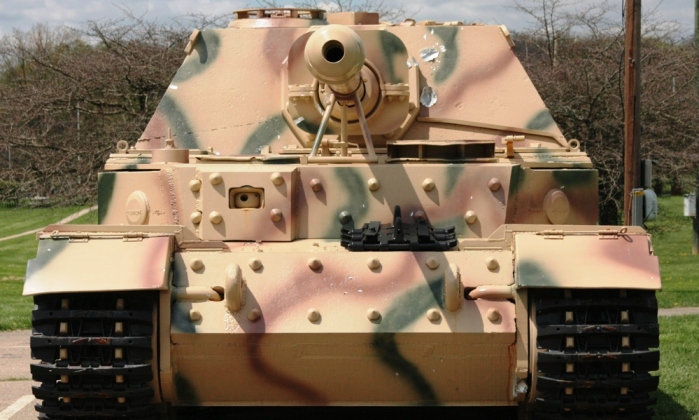
Design of the Ferdinand
Hull
By all standards, the Ferdinand was a beast, even heavier and longer than the Tiger, coming in at 65 tons after receiving additional armor, six more metric tons than the original Tiger(P). At first, it was propelled by a pair of engines placed in the middle of the hull. Despite the fact the powerplant was completely overhauled, the ventilation apparatus was relocated further to the front, while a casemate, constructed by Alkett, was relocated to the rear to house the gun and servants, which became the immediate recognition trademark of the Elefant. The casemate itself was made of slightly sloped plates slotted in and welded together. The whole superstructure weighed 15 tons. In addition to the original armor, which was 100 mm (3.94 in) at the front, 60 to 80 mm (2.36-3.15 in) elsewhere, 4.5 tons of additional appliqué armor were bolted on, raising the figure to 200 mm (7.87 in) at the front, the strongest protection seen on any tank at that time. This weight, however, took its toll on the duplex engine transmission. It should be noted that the front engine added an extra layer of safety for the crew, which will be repeated with the Merkava MBT years after. A detailed breakdown of the armor thickness follows: Superstructure front: 200 mm (7.87 in) @ 20°Superstructure side: 80 mm (3.15 in) @ 30°
Superstructure rear: 80 mm (3.15 in) @ 20°
Superstructure roof: 30 mm (1.18 in) @ 4°
Front plate: 100+100 mm (3.94+3.94 in) @ 10°
Hull front: 100+100 mm (3.94+3.94 in) @ 30°
Lower front plate: 80 mm (3.15 in) @ 45°
Side & rear: 80 mm (3.15 in) @ 0°
Engine deck: 30 mm (1.18 in) @ 90°
Belly: 20-30 mm (0.79-1.18 in) @ 90°
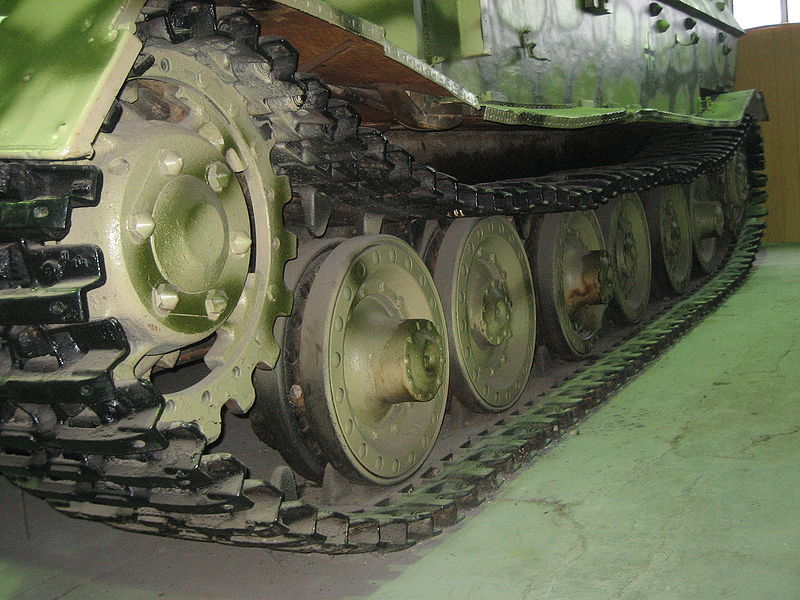
The driver was located in the front hull left hand side, with a one-piece hatch opening rearwards. On the right side was positioned the radio operator and his FuG transmitter/emitter. On the casemate roof there was, on the right side, a forward sliding periscope aperture for the gunner and a hinged hatch that could be used for escape by the gunner. The commander's two-piece hatch (not cupola) was located to the right, and the two-piece loader's hatch to the left, in échelon towards the rear, with a mushroom-shaped ventilation cap in between, center lined. There were two periscopes for the loaders at the corners of the rear armored roof. Access inside the casemate was granted by a large round hatch at the rear, with a cartridge ejection port in the middle. There were two other pistol ports in the rear part of the casemate on either side, that could be used either with a MG 34 or MP 40 for close combat. One distinctive aspect of the assembly was the forward attachment plate securing the fighting compartment to the hull.
Engines & performance
The original configuration called for two Porsche Typ 101/1 petrol engines mated to a common Siemens-Schuckert 500 VA generator, which in turn powered the two Siemens 230 kW electric motors. This arrangement was by far too complicated, necessitating careful maintenance and prone to overheating. But they provided a drive ratio of 15:1 directly to the drive wheels, which was unheard of at the time. Nevertheless, these were changed with more reliable engines and relocated further to the front-middle, with the ventilation sets further to the front. The replacements were two Maybach HL 120 TRM (245 hp@2600 rpm), which drove two Siemens Schuckert K58-8 generator sets, supplying two Siemens electric motors producing 230 kW @1300 rpm connected to the rear sprockets. Performance was as follows: Top speed of 30 km/h (19 mph), sustained speed of 20 km/h (12 mph), 150 km (95 mi) range with a full tank of 950 liters and a power-to-weight ratio was 8.16 hp/ton. Cross country, the speed was reduced to 10 km/h (6 mph) and the range to 90 km (55 mi) on average. On the testing grounds, it was shown capable to climb a 30° slope, 0.78 m step, cross a 2.78 m trench or ford 1.20 m of water. Ground clearance was 50 cm, track pitch 64 cm, and track width 2.70 m, for a contact length of 4.15 m. Roadwheel diameter was 70 cm and ground pressure 1.23 km/cm.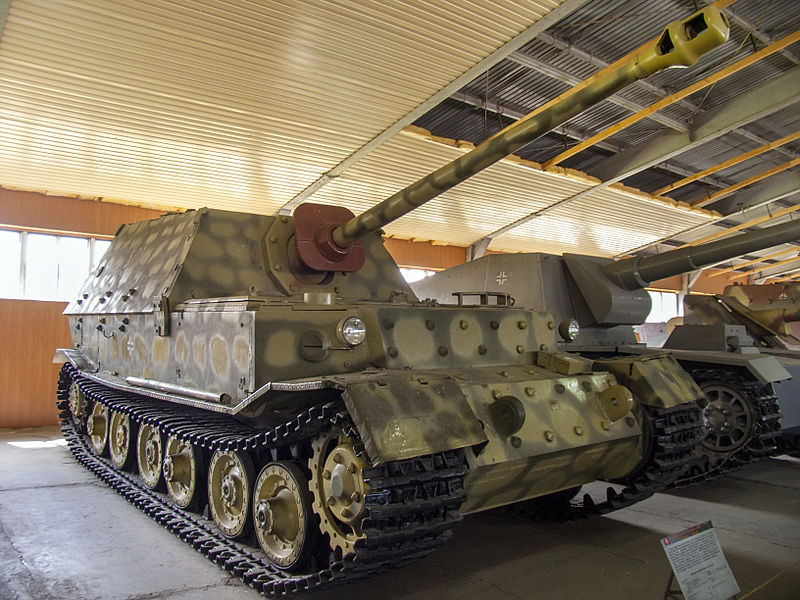
Drivetrain & suspensions
The drivetrain comprised three two wheel bogie assemblies - with doubled steel-rimmed roadwheels that, in addition, were relatively small. Porsche believed that they would give more amplitude for the suspension and the steel rimming could bear more weight. But the most innovative aspect was their semi-internal longitudinal torsion arms, three sets per side, which were not interchangeable. Indeed, this system allowed, in theory, to free internal space, contrary to the standard torsion arms. Each unit comprised a rocker arm, fitted on the main hull pivot, and a horizontal torsion bar casing arranged beneath the rocker arm and hinged to it at one end. Beneath the other arm, a rubber block was attached, resting lightly on the top of the torsion bar casing when the vehicle was idle. One bogie wheel axle is fixed on the torsion bar casing at a short distance from its free end, while the other is located to the pivotal axis between the casing and the rocker arm and serves as the hinge pin between them. This axle is also fixed to the rocker arm and carried in bearings in the torsion bar casings. A short radius arm is splined on this axis, and maintains a fixed angle with respect to the rocker arm. The torsion bar is anchored at one end by a splined intop at the free end of its casing, where it is secured by a nut and a lock nut. The other end is splined into a sleeve which is journalled in the torsion bar casing and extends back around to a point some distance beyond the end of the axle radius arm. A second radius arm is splined to the torsion bar sleeve beneath the first radius arm and a thrust member is collected by ball and socket joints between the ends of the two arms. (British technical intelligence report). Each bogie was 1.15 m long. In practice, this system seemed to collect mud and debris under the belly. So, a solution was devised. A cleaning fixture (which resembled a hook, or small curved blade) was attached just behind the idlers, bolted to an "L" bracket. The single-pint tracks were tensioned by idlers at the rear, while the drive sprockets were located to the front. Because the links traveled so close to the fender belly, protective "horns" were welded to the underside of the hull to help guide the tracks.Armament
The core of the Ferdinand was its 88 mm (3.46 in) PaK 43/2 L/71 gun, a development of the AA version with an even longer barrel, but less recoil and a completely overhauled breech and loading mechanism, tailored to be fitted on armored vehicles. It was supplied with 50 rounds, stored, for the most, inside the casemate. This gun had a traverse of 30°, elevation and depression of 18°/-8°. There was no secondary armament, a miscalculation which translated as one of the most costly engineering burdens on the battlefield. Instead, two pistol ports could be served by either a MP 40 machine-pistol or a single 7.92 mm (0.31 in) MG 34. Ammunition supply was 600 rounds for the MG 34 and 384 for the MPs. After the 1944 modifications, a ball-mounted MG 34 was added to the left right side of the driver's position, manned by the radio operator.Equipment
These included the sets of sights for the crew, a Zeiss Sfl.FLa periscopic sight for the gunner, a commander "cupola" table with seven vision blocks and one SF14Z scissors periscope, one periscope for each corner loader, three periscopic sights for the driver and a KZF2 periscopic gun sight for the radio operator. Radio equipment comprised a transmitter/emitter FuG-5, an intercom and a telegraphic communication set between the driver and commander.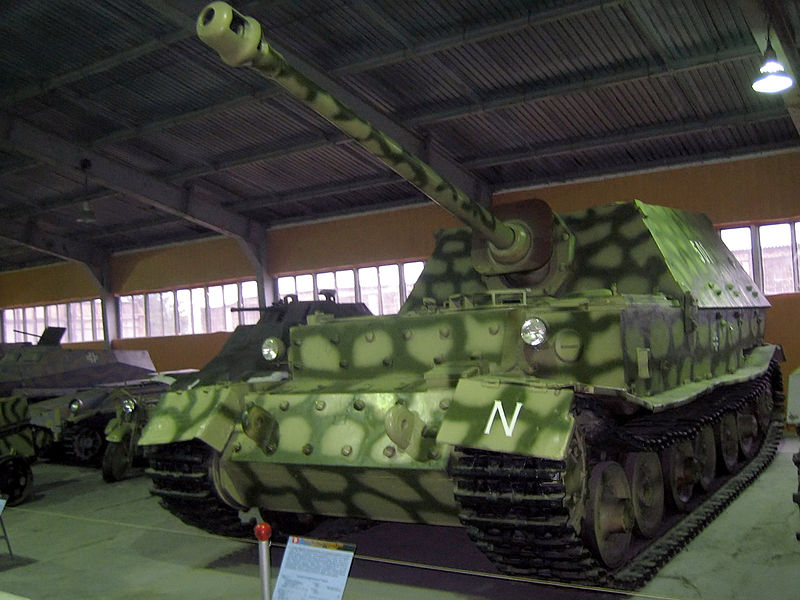
Production
Production of the original "Ferdinands" took place at Nibelungenwerke, and the St. Valentin facility in Austria did the final assembly. It needed, however, a whole range of modifications to increase reliability. The hull armor was welded by Krupp, Essen, but eventually, after cancellation of the Tiger(P), they were reworked at the new facility at Eisenwerke OberDonau Linz, Austria. The gun and breechblock mechanism was produced by Dortmund Hoerder Hutten Verein in Werk Lippstadt (Amp), and final assembly performed at Krupp. The main engines were manufactured at Maybach in Friedrichshafen and the electric generators at Siemens-Schuckert Berlin (Azg). On May 8, 1943 (end of production), Ferdinands also left the factory without the protective shield around the gun mounting, but there was an all-time inadequate number of these, as some Ferdinands never received them.Modifications
After Kursk, and according to numerous reports, the surviving vehicles were pulled out of the Eastern front and entirely overhauled at Nibelungenwerke in Austria. A proper commander cupola was welded in place over the roof's simple hatch (with 7 vision blocks), a ball mounted MG 34 was added for the radio operator, and Zimmerit anti-magnetic paste was applied. The nickname was officially changed to "Elefant". It was proposed in November and ratified by the OKH in February 1944, but both names were used in reports throughout 1944. It had become a practice to call "Ferdinands" the surviving ones that did not receive modifications, but it never became official.The Ferdinand/Elefant in action
The whole batch of 89 vehicles was sent to the Eastern front in two heavy tank hunter companies (schwere Heeres Panzerjager Abteilung 653 and 654, with 45 vehicles each) between May and June 1943, where they trained, waiting for Operation Zitadelle, the reduction of the Kursk bulge. There, the Ferdinands first saw combat, and their actions proved their might, just like the Panther and Tiger, but it was not enough. Tactically, their units were committed to destroy Soviet T-34s and 76.2 mm (3 in) anti-tank guns from behind the front lines, at a 3 mile (5 km) range and more. In this role, they performed admirably, according to plan. However, when advancing more in depth in the Soviet defensive lines, a variety of flaws were soon discovered, like the lack of peripheral vision blocks, or a machine gun as secondary armament. The pistol ports were not efficient when moving, and firing was done blindly. Accordingly, the Soviet infantry quickly learned from this and simply hid in their trenches and foxholes until the Ferdinand passed their lines, and then swarmed it with grenades and Molotov cocktails. Most of the losses experienced by this formidable tank hunter where indeed provoked not by enemy tanks, but by simple infantry devices and tactics.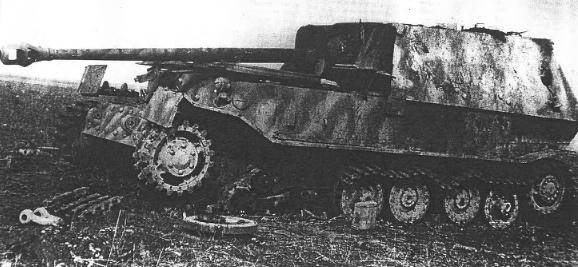 The other significant issue experienced at Kursk was mine damage and mechanical failure. Indeed, damage to the suspension or tracks imposed a repair sortie for the crews on the field, making them easy prey for snipers. Also, the components were extremely heavy. The other option was to wait for the standard ARV of German service at the time, the Bergepanzer IV, which was insufficient for this category of vehicle. Three were needed to tow a disabled Tiger I, but five for the Ferdinand, linked in tandem. Despite of this, in the initial stages of the battle, sectors were cleaned and secured enough to allow field repairs and recovery in relative peace at night. But once the tides had turned and the German forces were found on the defensive, Ferdinands disabled even with minor damage had little hope of recovery and the crews were forced to destroy these.
The other significant issue experienced at Kursk was mine damage and mechanical failure. Indeed, damage to the suspension or tracks imposed a repair sortie for the crews on the field, making them easy prey for snipers. Also, the components were extremely heavy. The other option was to wait for the standard ARV of German service at the time, the Bergepanzer IV, which was insufficient for this category of vehicle. Three were needed to tow a disabled Tiger I, but five for the Ferdinand, linked in tandem. Despite of this, in the initial stages of the battle, sectors were cleaned and secured enough to allow field repairs and recovery in relative peace at night. But once the tides had turned and the German forces were found on the defensive, Ferdinands disabled even with minor damage had little hope of recovery and the crews were forced to destroy these.
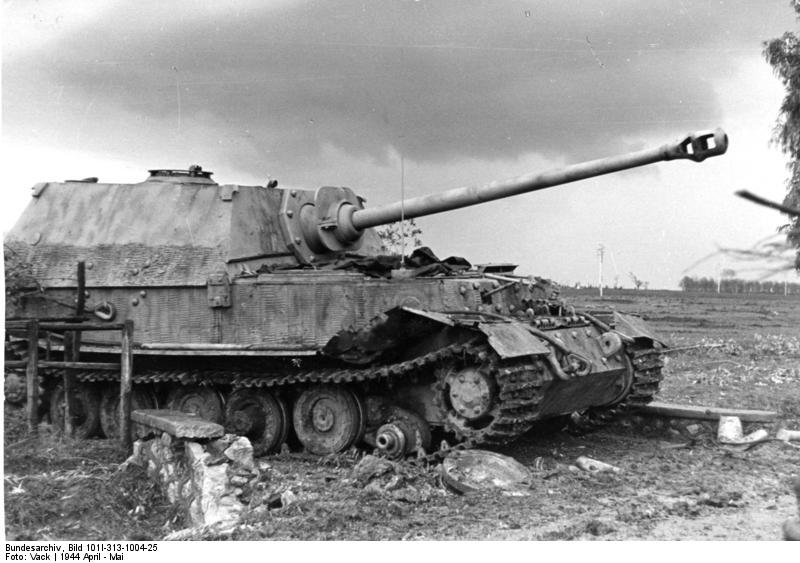 In March 1944, the reconstituted Schwere Jagdpanzer Battalion 653 was detached to Italy, and the units were deployed at company level, sub-divided into platoons accompanied closely with infantry to protect their flanks and rear. They saw action at the Anzio pocket. The unit saw a mix of modified and non-modified vehicles, but still, their mobility was a problem in Italy, where their weight forbade attempts to cross most bridges. Mechanical breakdowns and lack of spare parts still proved disastrous.
In March 1944, the reconstituted Schwere Jagdpanzer Battalion 653 was detached to Italy, and the units were deployed at company level, sub-divided into platoons accompanied closely with infantry to protect their flanks and rear. They saw action at the Anzio pocket. The unit saw a mix of modified and non-modified vehicles, but still, their mobility was a problem in Italy, where their weight forbade attempts to cross most bridges. Mechanical breakdowns and lack of spare parts still proved disastrous.
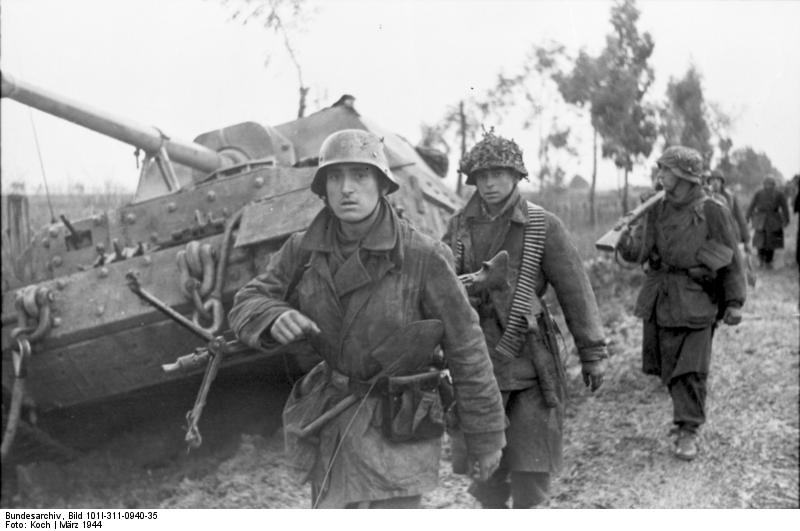 Another company saw action during the Soviets' January 1945 Vistula-Oder offensive in Poland. The remnants of the unit were seen in combat at Zossen during the Battle of Berlin. However, the Elefant impressed by their kill ratio, according to reports. This reached an average ratio of approximately 10:1. For example, at the Battle of Kursk, the 653rd Heavy Tank Destroyer Battalion claimed 320 enemy tanks destroyed for the loss of 13 Ferdinands. This was the advantage of both a very long range gun and impregnable protection, which was paid dearly in return by an excessive weight. Despite of this, Hitler still wanted to see these behemoths as proof that quality matched quantity on the battlefield, and subsequently pressed for the new Königstiger and the Jagdtiger to be ready in 1944. The latter (also called Panzerjäger Tiger Ausf.B) was indeed produced by the same manufacturer, Nibelungenwerk (Steyr-Daimler-Puch) to similar numbers (88), proved even heavier at 71 tons, but of dubious military value due to a mobility deliberately sacrificed on the altar of firepower and protection. However, in the meantime, both the Elefant and the Nashorn, which used the same gun, were superseded by the Jagdpanther, mounting a similar gun but with better protection, performances and a lower profile.
As of today, there are two surviving vehicles. One Ferdinand was captured by Soviet forces at Kursk and is now on display at Kubinka, outside Moscow and the other one, captured at Anzio by the Americans, is now in the Army Ordnance Museum's collection at Fort Lee, VA, restored in display condition in 2007–2008.
Another company saw action during the Soviets' January 1945 Vistula-Oder offensive in Poland. The remnants of the unit were seen in combat at Zossen during the Battle of Berlin. However, the Elefant impressed by their kill ratio, according to reports. This reached an average ratio of approximately 10:1. For example, at the Battle of Kursk, the 653rd Heavy Tank Destroyer Battalion claimed 320 enemy tanks destroyed for the loss of 13 Ferdinands. This was the advantage of both a very long range gun and impregnable protection, which was paid dearly in return by an excessive weight. Despite of this, Hitler still wanted to see these behemoths as proof that quality matched quantity on the battlefield, and subsequently pressed for the new Königstiger and the Jagdtiger to be ready in 1944. The latter (also called Panzerjäger Tiger Ausf.B) was indeed produced by the same manufacturer, Nibelungenwerk (Steyr-Daimler-Puch) to similar numbers (88), proved even heavier at 71 tons, but of dubious military value due to a mobility deliberately sacrificed on the altar of firepower and protection. However, in the meantime, both the Elefant and the Nashorn, which used the same gun, were superseded by the Jagdpanther, mounting a similar gun but with better protection, performances and a lower profile.
As of today, there are two surviving vehicles. One Ferdinand was captured by Soviet forces at Kursk and is now on display at Kubinka, outside Moscow and the other one, captured at Anzio by the Americans, is now in the Army Ordnance Museum's collection at Fort Lee, VA, restored in display condition in 2007–2008.
Links and resources
The Panzerjager Tiger(P) on Wikipedia The Elefant on Achtung Panzer Thomas L.Jentz & Jeffrey McKaughan - Museum ordnance special 4 Elefant (Darlington prod. Inc.)Tank Overhaul series - The Elefant
Gallery
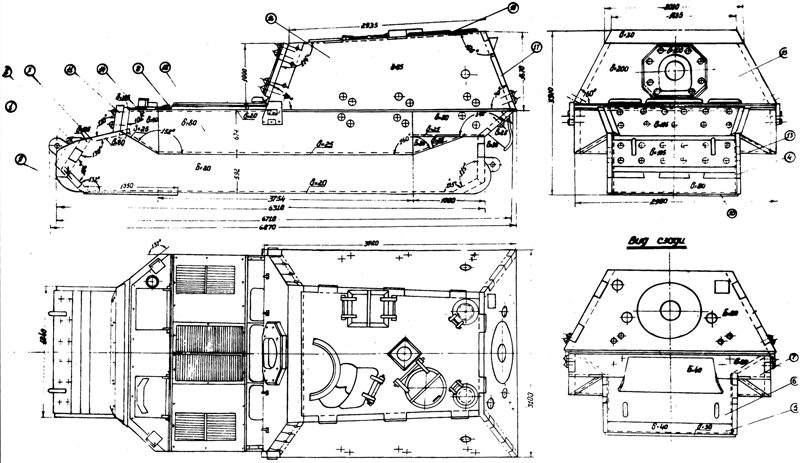
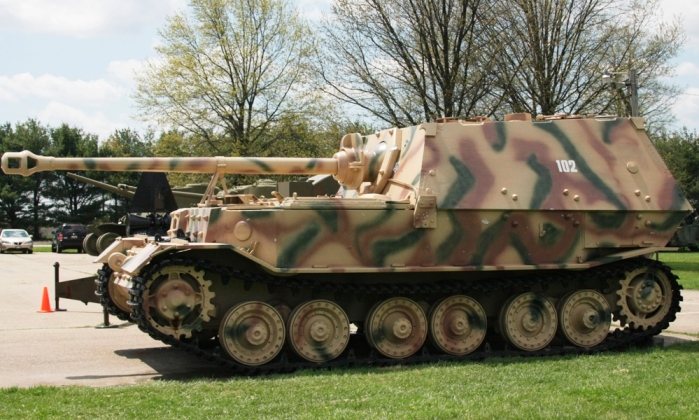
The Ferdinand in Italy
After Kursk the surviving Ferdinands fought various rear-guard actions in 1943 until they were recalled for repair, modification and overhaul, partially based on battle experience gained. They returned to the Nibelungenwerke factory in Austria, on 02 January 1944. Due the Allied landings in Anzio, OKH ordered 656 Schwere Panzerjäger-Regiment to prepare a Ferdinand company for despatch to the front. Only 11 vehicles were available, and these were assigned to 1st company 653 Schwere Panzerjäger battalion. The company was placed under the command of Leutnant Helmut Ulbricht and organised as below.Stabs Co: Gun numbers 101,102;
1.Platoon: Gun numbers 111,112,113,114;
2.Platoon: Gun numbers 121,122,123,124;
3.Platoon: Gun number 131;
It was also assigned one recovery Ferdinand and various support units.
At the beginning of Feb 1944, it was despatched to the front arriving in Rome between the 16th and 24th Feb. Here it was assigned to 508th Tiger battalion. This unit went into action under the command of Parachute Panzer Division Herman Goring and in the opening days of combat lost 2 guns.
On 1 March 1944 - 114 (commander Uffz. W. Kuhl) bogged down on the Cisterna – Nettuno Road.
On 2 March 1944 – 131 (commander Obfw. G. Koss) mined and was destroyed because it proved impossible to recover.
On 1 May 1944 the order to rename the vehicle as Elefant was issued and from May 19th they are described as Elefants in 14th Army documents. They return to action on 24th with Leutnant Grupe destroying 4 Shermans but lose another vehicle.
On 24 May 1944 – 102 (commander Hptm. H. Ulbricht) is abandoned after catching fire on the road Cisterna-Cori.
On 25 May 1944 – 113 (commander Fw. E. Roos); thrown track hit, received damage to the chassis.
After this action the Elefants retired North suffering losses all the way. On the 2/6/19 an air raid hits the motor pool, destroying vital recovery half-tracks and wheeled vehicles. One of the two Pz III ammo carriers is also destroyed.
On 6 June 1944 – 123 (commander Obgf. Lassig); was destroyed near Via Aurelia as a result of an attack by American aircraft.
On 7 June 1944 – 121 (commander Lt.W. Grupe); was destroyed when the bridge between Monte Fiascone and Orvieto collapsed under the weight of the vehicle.
On 10 June 1944 – 122 (commander Fw. R. Schlabs); destroyed near Orvieto by the US Air Force.
On 10 June 1944 – 112 (commander Fw. A. Schmitt); was mined by the crew in Ficulle after breaking down and with no possibility of recovery.
In July 1944 – 124 (commander?) was abandoned due to mechanical problems near Viterbo.
On the 2 August 1944 the remaining 2 Elefants and the recovery Elefant loaded onto a train and were evacuated to Vienna.
Sd.Kfz.184 Elefant specifications |
|
| Dimensions (L-W-H) | 6.97 (8.14 oa) x 3.38 x 2.97 m (26.8 x 11 x 9.9 ft) |
| Total weight, battle ready | 65 tons (143,000 lbs) |
| Armament | 88 mm (3.46 in) Pak 43/2 L/71 7.92 mm (0.31 in) MG 34 (1944) |
| Armor | 60 to 200 mm (0.6 - 7.87 in) |
| Crew | 6 (driver, commander, radio, gunner, 2 loaders) |
| Propulsion | 2 × Maybach HL 120 petrol 600 hp (442 kW), 9.23 hp/t |
| Speed | 30 km/h (19 mph) |
| Suspension | Longitudinal torsion bar |
| Range and consumption (road/off-road) | 150 km (93 mi)/ 90 km (56 mi) |
| Total production | 91 |

Germans Tanks of ww2

Porsche's VK 45.01 prototype in 1942. It was given as a favorite, before problems with the complex powerplant emerged.
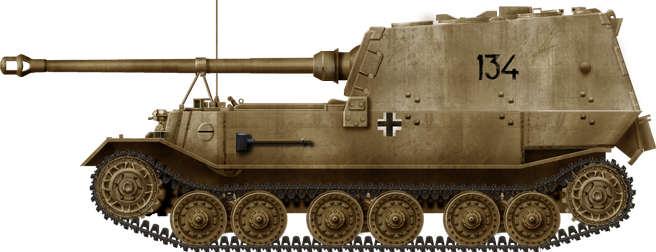
Early production Ferdinand, Panzerabteilung 653, summer 1943.
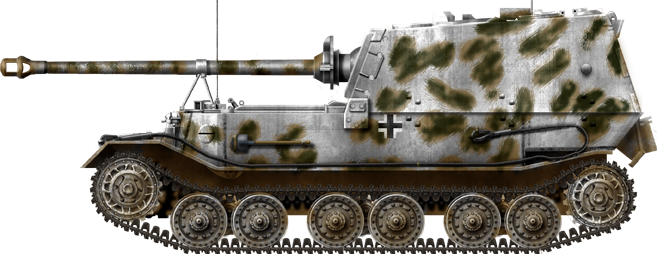
653rd Panzer-Abteilung, Eastern front, winter 1943-44.
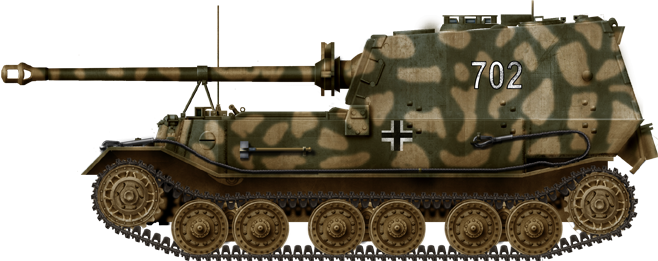
Ferdinand of the 654th Panzer-Abteilung, Kursk, summer 1943.
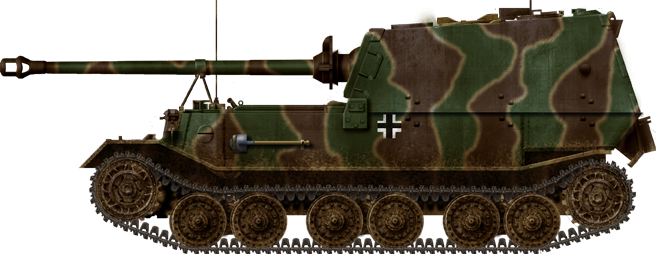
Ferdinand of the 654th PanzerJäger Abteilung, Kursk, Eastern front, 1943.
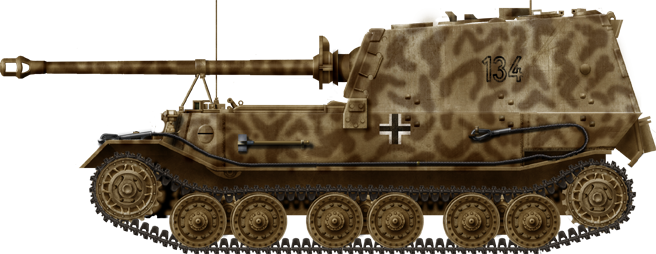
Sd.Kfz.184 "Elefant" of the 1st company, 653rd Schwere Heeres Panzerjäger Abteilung, Anzio-Nettuno, March 1944.
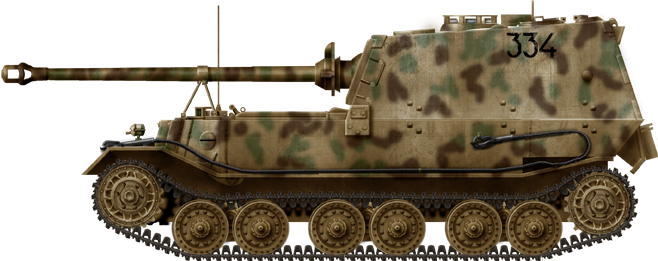
Tiger(P) Elefant (late type) from the Abt.653 HQ Company, Brzherzhany, Ukraine, July 1944

WW2 Tanks




























WW2 tanks posters

All Tiger tanks liveries.

Panther liveries and variants

WW2 Armour - All tanks











Tanks aces and single tanks series

Find more there

Museums, Movies, Books & Games
The Tanks and Armor in pop culture
Tanks and armored vehicles in general are only really grasped when seen first person: The mass, the scale, it's all there. Explore also the way tanks were covered in the movie industry, in books and in video games.Movies:
Best tanks movie on warhistoryonline.com
On imdb.com
On bestsimilar.com/
miltours.com
liveabout.com/
watchmojo.com
Video Games:
pcgamesn.com
historyhit.com
levvvel.com
vg247.com/best-tank-games
mmobomb.com/
alienwarearena.com

